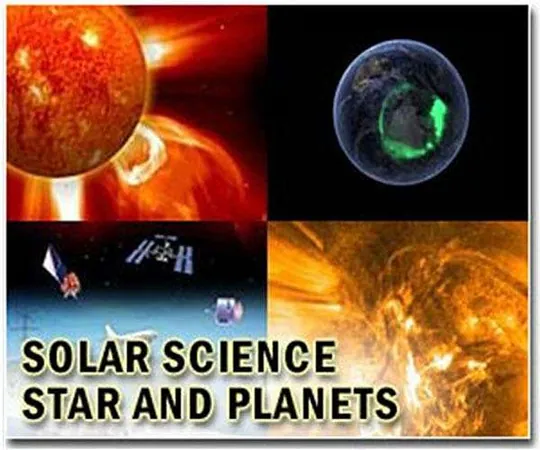
NASA Unveils Insights from the Most Powerful Geomagnetic Storm in 20 Years
2025-05-12
Author: Yu
A Meeting to Prepare for the Unexpected
A year ago, NASA joined forces with approximately 30 U.S. government agencies for a pivotal gathering aimed at confronting a looming threat—not from outer space, but from our very own Sun. This event, dubbed the Space Weather Tabletop Exercise, was designed to simulate the impact of a geomagnetic storm, which can cause widespread chaos in communications, satellites, and power grids. Little did these experts know that their hypothetical exercise would soon turn into an urgent real-life situation.
The Gannon Storm Strikes
On May 10, 2024, Earth was jolted by the first G5 or 'severe' geomagnetic storm in two decades, named after prominent space physicist Jennifer Gannon. Despite its impact, the storm did not wreak havoc as feared, but its consequences were significant enough to provide crucial lessons for future preparedness.
Landslide of Effects
The Gannon storm had repercussions that rippled both on the ground and in orbit. In the Midwest U.S., high-voltage lines tripped, transformers overheated, and GPS systems malfunctioned, costing some farms an estimated $17,000 each—definitely a hit, but not catastrophic. Flight routes were altered as the increased radiation posed serious risks to trans-Atlantic travel.
Atmospheric Anomalies
The storm heated Earth's thermosphere to unprecedented levels, soaring above 2,100 degrees Fahrenheit—almost double the average peak temperature. This unusual heat led to the expansion of the atmosphere, creating new winds and displacing heavy nitrogen particles into higher altitudes.
Satellite Chaos
In space, this atmospheric expansion increased drag on thousands of satellites, forcing NASA's ICESat-2 into safe mode and causing the premature re-entry of the CIRBE CubeSat. Other missions, like those from the European Space Agency, had to adjust their power to navigate safely among space debris.
Transformative Ionospheric Changes
The storm didn't stop there—it altered the very structure of the ionosphere, creating a unique gap and causing unusual electromagnetic behavior. NASA's missions like MMS and THEMIS-ARTEMIS recorded rare waves of energy that significantly influenced Earth's magnetosphere.
Spectacular Auroras
The Gannon storm sparked auroras around the globe, igniting a surge of over 6,000 reports from observers in all corners of the Earth. Notably, auroras in Japan displayed a striking magenta hue, a rarely seen color linked to the peculiar atmospheric conditions stirred up by the storm.
Affecting Other Worlds
The effects of this solar tempest even reached Mars, where NASA's MAVEN orbiter observed auroras lighting up the Martian atmosphere. Meanwhile, the Curiosity rover captured dramatic images affected by charged particles, recording the highest radiation levels since its landing in 2012.
Lessons Yet to be Learned
Often dubbed the best-documented geomagnetic storm in history, the Gannon storm has left scientists with a wealth of data to analyze. As we continue to study the lessons from this historic event, our understanding of geomagnetic storms—and how to mitigate their impacts—will only deepen.
Stay Tuned for More Discoveries!
With ongoing research into the Gannon storm, we can expect more revelations about solar activity's influence on both Earth and our neighbor, Mars. One thing's for sure: the Sun's power is a force to be reckoned with.


 Brasil (PT)
Brasil (PT)
 Canada (EN)
Canada (EN)
 Chile (ES)
Chile (ES)
 Česko (CS)
Česko (CS)
 대한민국 (KO)
대한민국 (KO)
 España (ES)
España (ES)
 France (FR)
France (FR)
 Hong Kong (EN)
Hong Kong (EN)
 Italia (IT)
Italia (IT)
 日本 (JA)
日本 (JA)
 Magyarország (HU)
Magyarország (HU)
 Norge (NO)
Norge (NO)
 Polska (PL)
Polska (PL)
 Schweiz (DE)
Schweiz (DE)
 Singapore (EN)
Singapore (EN)
 Sverige (SV)
Sverige (SV)
 Suomi (FI)
Suomi (FI)
 Türkiye (TR)
Türkiye (TR)
 الإمارات العربية المتحدة (AR)
الإمارات العربية المتحدة (AR)